I need to convert a digital signal generated from a microcontroller GPIO (0-3.3V) to a high-power (15-40W) current signal to drive an LED chip for illuminance, where the signal frequency can range from 1kHz to 1MHz.
The goal is to utilize the optical channel for data transmission while fulfilling the constraints of regular illumination. Digital data will be encoded in the LED with on-off keying at a high frequency and at the same time maintain a flicker-free and stable illuminance, so the current must be very stable.
How should I design the circuit?
Will the below design using a constant current driver, a voltage-controlled SPDT work? The clock signal in the diagram is supposed to be

